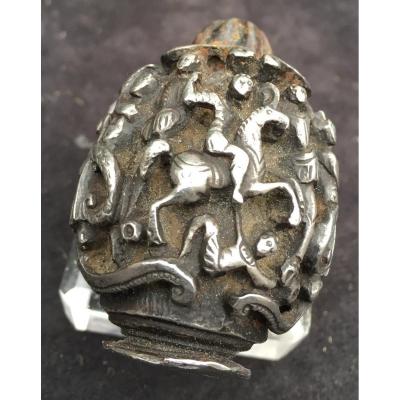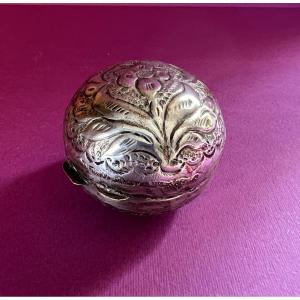EARLY QAJAR PERIOD (late 18th century)
Gray-beige cracked enamel background,
stylized geometric and floral decoration in deep blue.
Very beautiful shiny glaze
Superb patina of daily use and repeated over centuries, especially under the bottom of the ceramic (intentionally, the object wasn't cleaned)
Very nice folk art daily item.
Condition:
The ceramic huka base shows a mark of another element having certainly touched it during its firing. Also note a micro hole on the belly linked to wear and a low thickness of the ceramic in this place.
The piece is however relatively heavy, which shows the primitive nature of this production, with unequal thicknesses of material depending on the places.
The opening at the top was used to receive the body of the huka base finished at its upper end by the burner; the side one was used for smoking (pipe mouthpiece)
Dimensions:
22cm height *
approx 18cm diameter
Lot of charm for this object of civilization.
"The Qajar Empire designated Persia from 1794 to 1925, under the reign of the Qajar dynasty founded by Agha Mohammad Khan, originally from the Qizilbash tribe. He overthrew Lotf Ali Khan Zand in 1794 and Chahrokh Shah in 1796, uniting their territories under his authority by establishing the capital in Tehran."


















































 Le Magazine de PROANTIC
Le Magazine de PROANTIC TRÉSORS Magazine
TRÉSORS Magazine Rivista Artiquariato
Rivista Artiquariato